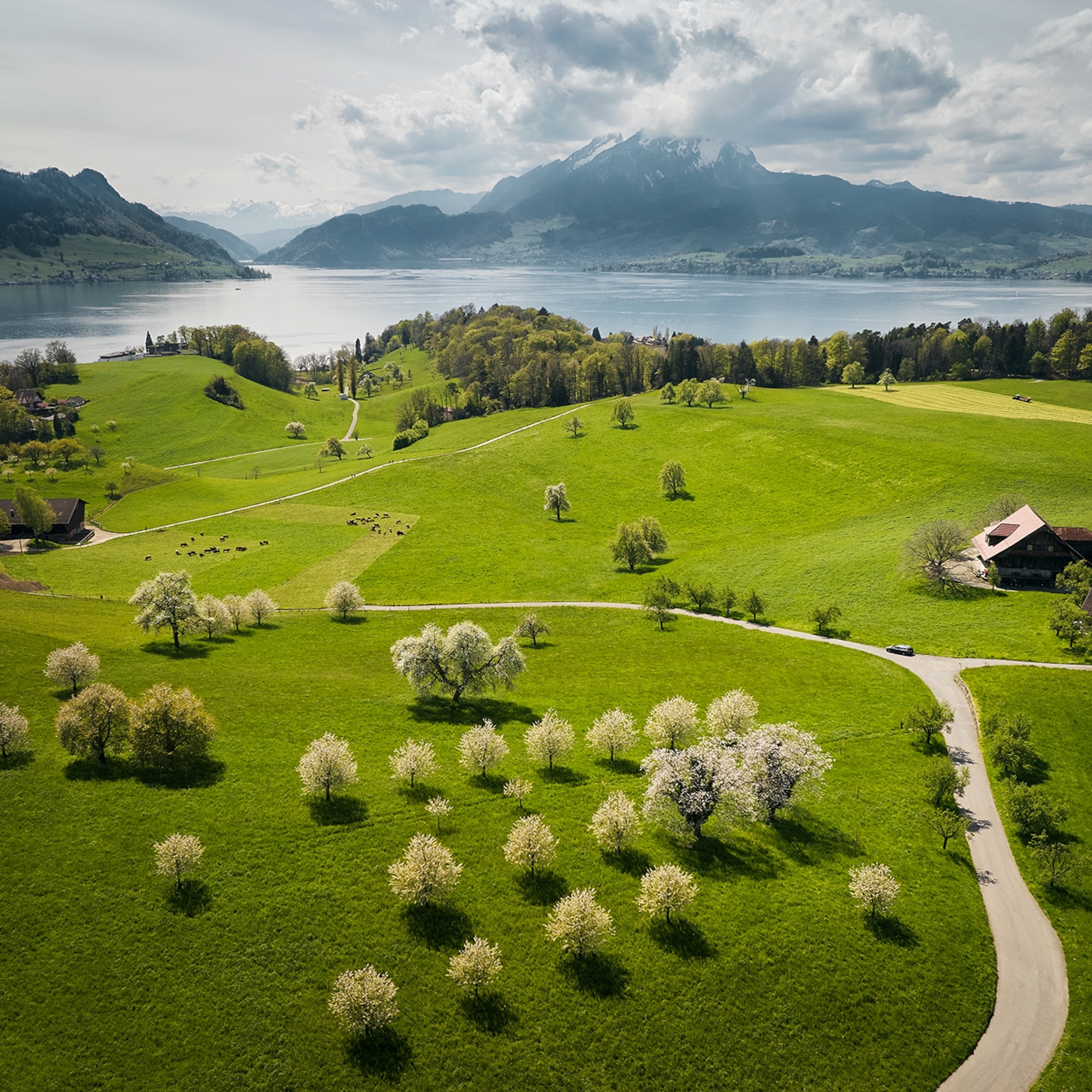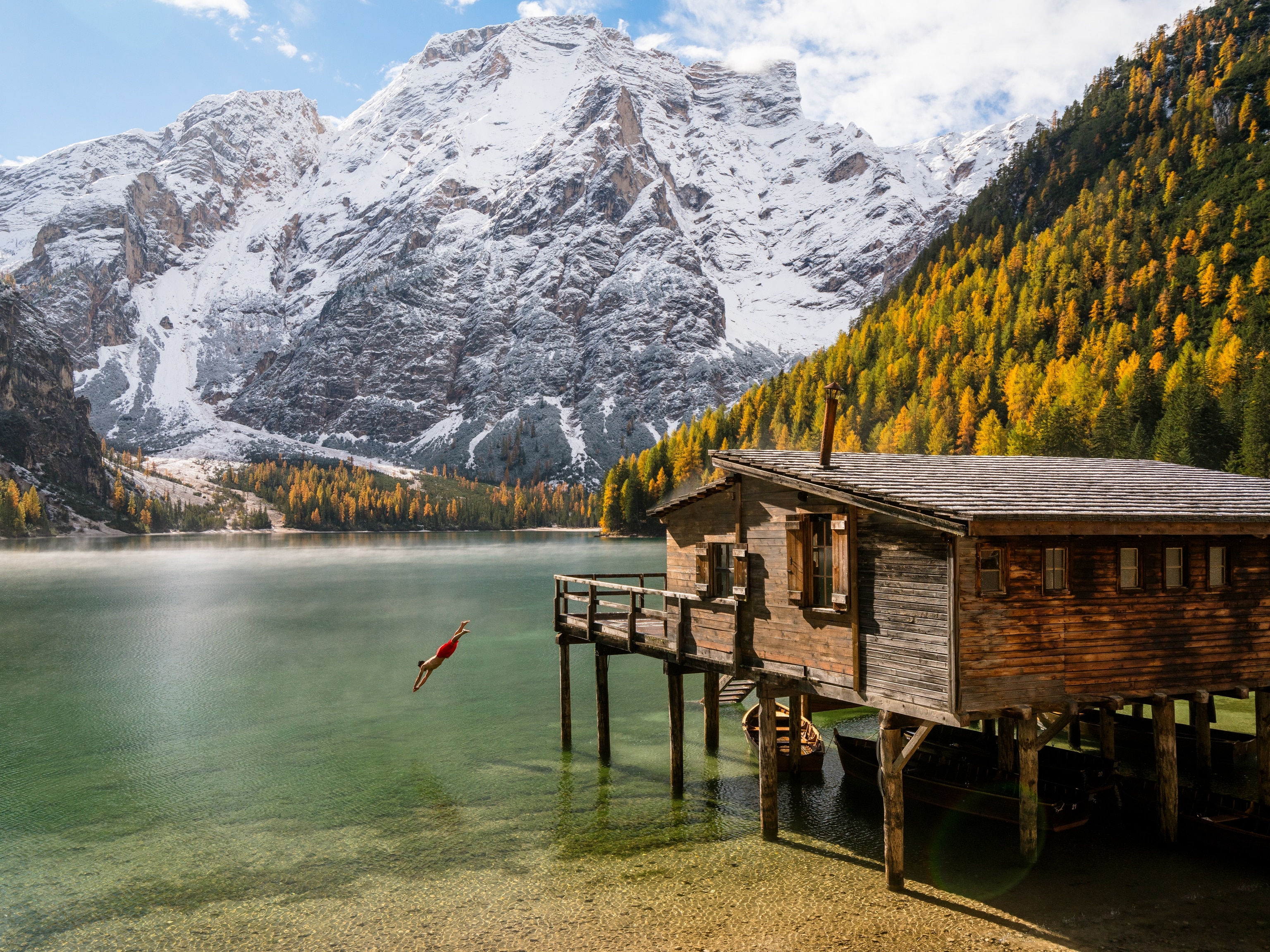
This French region will be your next travel obsession
In the Jura, discover wine, cheese, and outdoor adventures that add up to an excellent off-the-beaten-path journey.
With estimates of 89.4 million international visitors in 2018, France again claims the title of the world’s most visited country. Is it possible that there are still a few secrets to uncover in this ever-popular destination? A meander into the scenic Jura region, in the eastern part of the country, shows that oui, c’est possible!
Officially a department in the greater region of Bourgogne–Franche-Comté, the Jura is stitched in roughly between Bourgogne, or Burgundy, to the west and the Swiss border to the east. Thanks to an economy that revolves around producing renowned wine and cheese amid rolling vineyards and mountain meadows, the Jura is a bucolic buffet for lovers of French food. But it also draws outdoor adventurers with its stunning lakes, waterfalls, valleys, limestone cliffs, and more than 4,000 caves. Add historic villages and UNESCO World Heritage sites, and you may start to wonder why the Jura isn’t better known. Of course that’s part of its appeal. Here’s how to explore this under-the-radar area.
Sample the local cheese
Of the four AOC-designated cheeses made in the Jura, pale-yellow Comté may be the most beloved. (The others are Morbier, Mont d’Or, and Bleu de Gex.) To learn more about the coveted curds, bring your curiosity—and your appetite—to the Maison du Comté in the village of Poligny. Here you’ll get an interactive overview of the traditional production methods and the distinctive influence of terroir on the cheese’s aroma and flavor. The visit ends with a tasting of two varieties.


Pick up picnic fare at Badoz Vins & Fromages, a boutique run by a family of award-winning cheese makers, then drive one of the Routes du Comté that wind past dairies and farms. Some of the latter offer overnight accommodations, such as Ferme de Fleurette, where the pastures are full of bell-jingling Montbéliarde cows, one of only two breeds whose milk is allowed in the production of Comté.

Many of us could live on cheese alone, but for a more varied splurge, head to the town of Arbois and its two-Michelin-starred Maison Jeunet, a longtime pilgrimage stop for gourmands. Rustic tavern La Finette is another local favorite, known for its rich fondue of bubbling Comté. On the storybook main square of Arbois, several cafés and brasseries offer perches to fill up and take in the scene. For dessert, don’t miss the shop of fourth generation master chocolatier Édouard Hirsinger, whose cakes, tartlets, and chocolates are considered among the best in France.
Try unusual wine varieties
What to pair with all this cheese and chocolate? The local wine, naturally. Though the Jura is France’s smallest wine region, it produces acclaimed and unexpected varieties. Vin jaune (yellow wine), a late-harvest white made entirely from the Savagnin grape, ranks as the elixir of note. In most wine production, the barrels are filled to the brim, but vin jaune makers leave an air gap that allows a layer of yeast, called the voile (veil), to form on the liquid’s surface. This prevents further oxidation and advances the wine’s nutty flavor over the six-year aging process. A vin jaune bottle is easily identifiable—just look for the squat vessel, called a clavelin, which is smaller than a standard wine bottle.

Find the center of vin jaune production in the village of Château-Chalon and its surrounding vineyards. Every year during the first weekend in February, a different Jura village hosts the Percée du Vin Jaune, a festival toasting the newly bottled vintages. Oenophiles will also discover wines from unusual red grape varietals, such as Trousseau and Ploussard. In Arlay, 15 generations of the same family have been cultivating a range of Jura wines at Caves Jean Bourdy, making it one of the oldest domains in the area.
Tackle outdoor adventures
Balance your wine and cheese intake with a dose of calorie-burning exploration of the dazzling landscapes. The vast network of trails making up the Grandes Traversées du Jura features six different routes tailored to specific activities, including hiking, mountain biking, horseback riding, and cross-country skiing. France’s most famous long-distance cross-country ski race, the Transjurassienne, takes place here every February. On the French-Swiss border, both Les Rousses and Métabief offer an array of winter sports, from downhill skiing to snowshoeing.

Lakeside lounging is a popular summer pastime, since the Jura is strewn with many beach-fringed options such as Lake Vouglans, where you can rent paddleboats and canoes. Hike to the stunning Hérisson waterfalls, a series of seven cascades accessible only on foot, or descend into the stalagmite-encrusted cave of Gouffre de Poudrey, an “underground cathedral” near the village of Besançon. To see a good example of the Jura’s typical flat-bottomed valleys, called reculées, head to the village of Baume-les-Messieurs, which is surrounded by craggy limestone cliffs and has a Benedictine abbey that’s worth a visit.
Want to explore the wild side of France’s Provence region? Take a road trip through the Camargue.
Travel back in time
Passing through Salins-les-Bains, you can’t miss the enormous buildings and chimneys of the Great Saltworks. Once a prosperous mine, the UNESCO World Heritage site now features a museum that traces the 1,200-year history of salt production and traditions in the Jura mountains. Tour the tunnels and see the furnaces that workers stoked to draw salt out of the briny water surfaced from underground wells.
In the riverside town of Dole, the former seat of the dukes of Burgundy and the capital of Franche-Comté from 1332 to 1674, find the Collégiale Notre-Dame, an imposing 16th-century church with impressive art and stained glass windows. Tucked away on one of Dole’s narrow lanes is the home turned museum dedicated to scientist and native son Louis Pasteur. A visit here reveals details about his discoveries that revolutionized the food and medical industries.
Getting there
From Paris, take a two-hour ride on the TGV train to Dole, where you can rent a car. Because the area is rural, the best way to get around is by driving.
- National Geographic Expeditions







